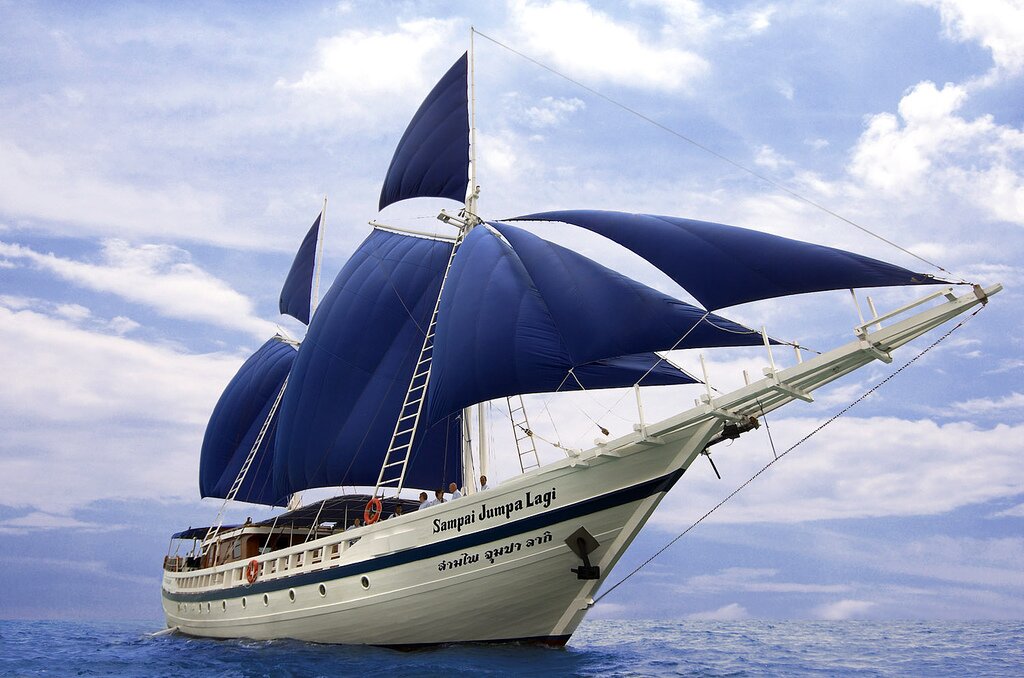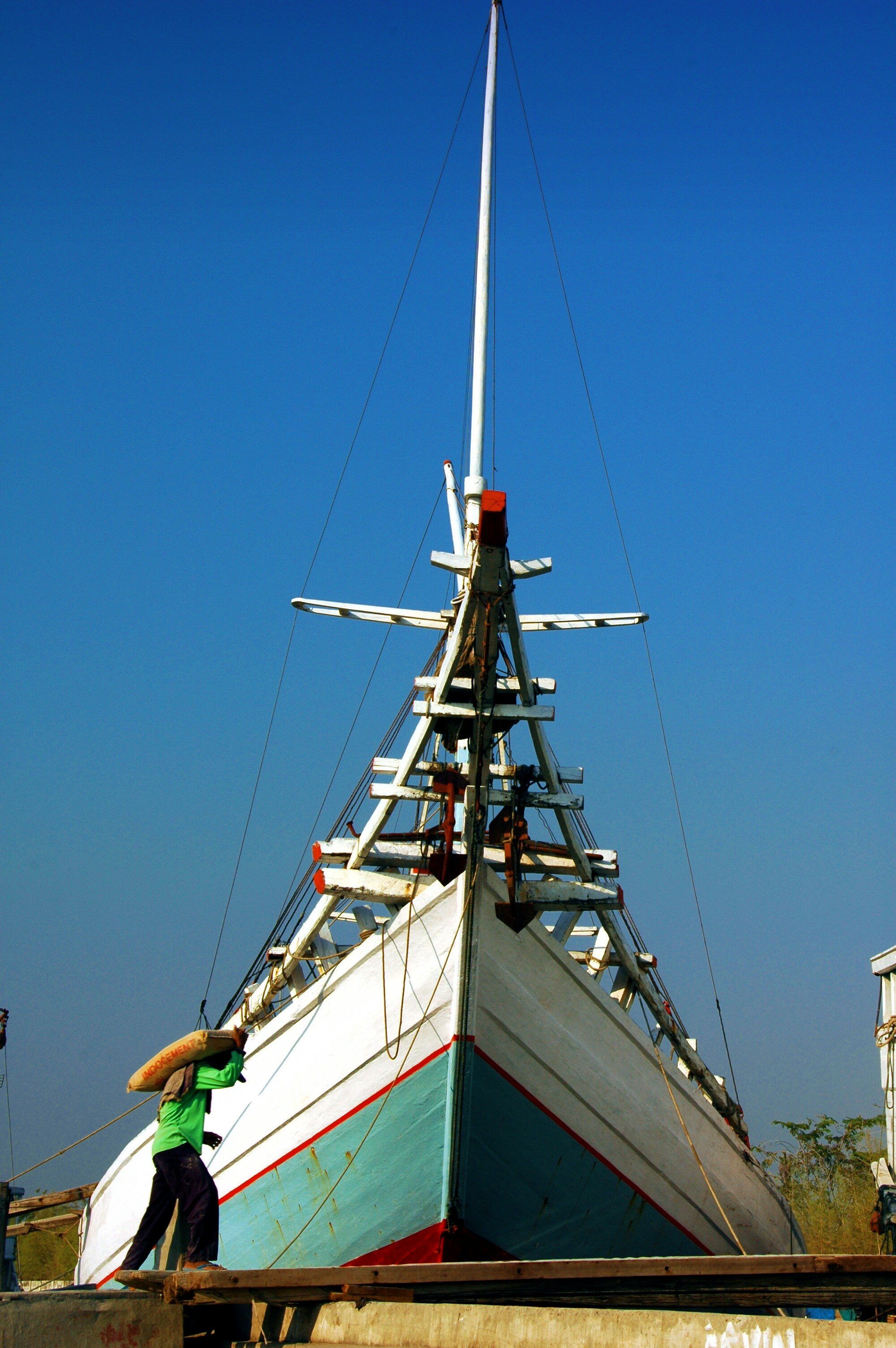History
The most traditional ship in Indonesia used to have a so called tanjaq sail. These were square sails and are still regarded as the most indigenous of all rigs in Indonesia. You still might find them on the occasional fishing boat, especially in the eastern part of Indonesia.
The lateen sail is used by Indian, Persian and Arab sailors since around 400CE. Indonesian’ sailors by that time had reached and settled Madagascar, and since around 500CE were regularly trading to China. They must have seen lateen sails by then, also because Indians, Persians and Arabs often travelled to the Indonesian archipelago at around that time.
Around the year 1600 the Dutch arrived in the region and they too brought the lateen sail with them. After decades the indigenous Indonesian sailors started to incorparte this triangular shaped lateen sail in their own boats. Later they begun to combine the tanjaq sails with the fore-and-aft type of sails they saw on the European ships. Eventually the square sail disappeared altogether and, after the introduction of the schooner by Europeans, in the course of more than a century, the pinisi as we know it was gradually born.
An interesting story is found in Gibson-Hill, C.A., 1953: ‘‘The Origin of the Trengganu Perahu Pinas’’, Journal of the Malayan Branch of the Royal Asiatic Society, Here is a short version: “As the story goes, the first pinisi (pronounced ‘peeneeseek’) was probably built in the 1840s by a certain French or German beachcomber in Trengganu, Malaysia, who had settled and married a local girl there. When one day the raja, Sultan Baginda Omar, asked the long-nose to help in building a boat that would be the same as the most modern western vessel, a royal schooner was built; boat and builder -by the name of Martin Perrot- were seen and met by an English captain who anchored in Trengganu in 1846.
Following Malay traditions, this vessel became the prototype for a new class of vessels which were called pinas or penis, probably after the word pinnace, which since the 17th century had referred to a medium-sized, round-sterned sailing vessel.” Basically the ship is a combination of a new type of sails with a locally built hull. While the schooners and lateen sails are long gone as working sails in the West, in the East you still can find a few of them being used in the original way.




